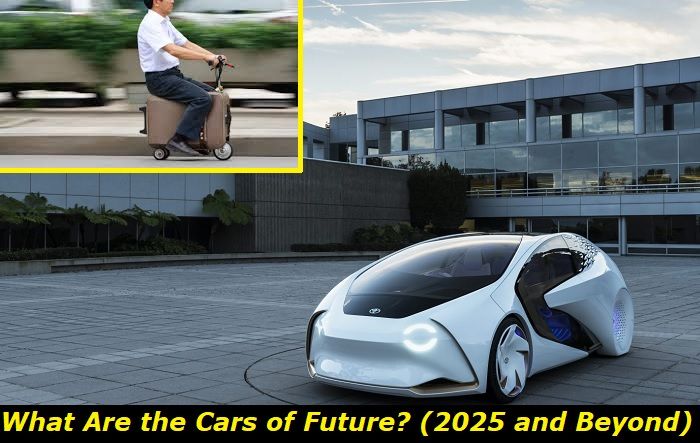Honda Pioneer has been a talk on people's lips for a while now. The automobile is highly desired. It's a real heavyweight vehicle when scaled on versatility and performance, despite its small size. The vehicle has found its way to many ranches and farmland, and the users have appreciated its contribution to their activities. Nonetheless, the Honda pioneer 520 has some troubling issues that cannot be overlooked.
In this article, we will be looking at some Honda Pioneer 520 problems.

What are the problems with Honda Pioneer 520?
The Honda Pioneer 520 is powered by a 518cc fuel-injected four-stroke engine that has been tuned for side-by-side use. The bore and stroke of the power plant are 96.0 mm and 75.3 mm, respectively. As a result, it has more torque and power in the low-to-midrange, making it ideal for combating chores or rushing up trails while used in difficult terrain with harsh topography like ranches, valleys, woods, farmland, etc.
It does not require a belt drive because power is fed directly to the front and rear driveshafts. It is once again longitudinally mounted in the chassis, allowing direct driveshaft alignment to the front and back wheels. This allows maximum drivetrain efficiency on the Honda Pioneer 520.
Despite having these amazing engine features, at least on paper. The Honda Pioneer 520 is faced with some transmission problems, such as clutch overheating.
Clutch overheating problem
The major causes of clutch overheating include:
- Overloading
- Driving at a low speed
Clutch overheating is a common problem that Honda Pioneer 520 owners bring to an auto repair shop. Is this a manufacturing issue caused by Honda's attempt to produce a four-stroke engine that can work in an imbalance or harsh terrain, or is it a problem caused by Honda's effort to produce a vehicle that can work in an imbalance or harsh terrain? However, the issue has caused a great deal of concern among vehicle owners.
It is typical human nature to want to exceed the maximal limit for most vehicles. The clutch failure in the Honda Pioneer 520 can be traced to users' attempts to move a heavy load that exceeds the carrying capacity of the Honda Pioneer 520. It is important to note that the side-by-side can only tow a certain amount of weight, and you must account for everything else you have on and in the vehicle, including gears, passengers, and supplies. As a result, too much pressure on the clutch gets overworked, and constant clutch use with such a heavy load gets the clutch overheated. This can make it slip and eventually fail.
The clutch gets overworked and constant use of the clutch with such a heavy load gets the clutch overheated. This can make it slip and eventually fail.
Another possible cause for clutch overheating is low-speed activities like rock crawling. If you are driving in harsh terrain, in most cases, constant pressure on the gas pedal to help regulate and control your movement and acceleration. This results in little movement but a lot of force exertion on the Honda Pioneer's clutch, quickly overheating the clutch.
Solving clutch overheating problem
Regardless of the situation, if you are vigilant and notice that your clutch is in danger, you can put the vehicle in neutral or park and leave the vehicle engine running. This allows the machine to properly cool both the primary and secondary clutches by pumping coolant into them.
However, when you detect such threats, it is not a good idea to turn the car off completely because this will prevent the vehicle from pumping coolant to the clutch system, and the problem will return when you restart the vehicle.
If you plan to use your Honda Pioneer 520 on rough terrain on a regular basis, you should look for a more durable option. Replacement of the stock clutch with a more durable unit will provide a long-term solution to the problem.
However, if you want to avoid a recurrence, you'll need to focus on the root of the problem. The unfortunate reality is that the Honda Pioneer 520 lacks a clutch overheating indicator, so the user must be extremely vigilant to detect when the problem arises.
Power loss problem
Another common complaint among Honda Pioneer 520 owners is that their vehicle loses power when they accelerate. This power loss is most noticeable when climbing steep inclines and hills. This has raised a lot of questions, such as whether the vehicle is only designed for farmland or for other types of terrain. In addition, is the Honda Pioneer 520's four-stroke engine too small to propel it up steep inclines?
The reality is, judging from the body size, the tire types and the architecture of the Honda Pioneer 520. The vehicle was not designed to be a regular road vehicle but rather a tour, farmland, or ranch vehicle. So, cruising through steep inclined should be a piece of cake. However, the vehicle can face little challenges with power loss due to worn-out spark plugs, as well as damaged spark plug cables and boots.
Like in any regular vehicle, these issues will cause the Honda Pioneer 520 to misfire and lose power in the engine. However, a check engine indicator will frequently get turned on as a result of these symptoms. These plug failure problems are usually associated with Honda Pioneer 520 for some reasons.
- It is too rich in air/fuel mixture
- Driving at low speed due to bad terrain
- It is not a vehicle that regularly hits the road
The Honda Pioneer 520 engine is normally attributed to a rich fuel mixture, which can be attributed to its size. Because the plugs become soaked, this issue contributes significantly to the loss of power.
The engine will be flooded with more fuel than it was designed for in the fuel/air mixture. A bad spark plug does not affect the mixture because it is ascertained before it goes to the cylinders.
The Honda Pioneer 520 is a vehicle that is known for its bad terrain performance. This means that the vehicle will be moving at a slow speed in most cases. However, this can overflow oil into the engine, causing the plug to become soaked and the vehicle to lose power. In addition, another major cause of plug failure in Honda Pioneer 520 is due to the fact that the vehicle does not hit the road regularly. This causes the carbon remains in the engine to settle and accumulate dirt on the plug.
Clogged and suffocated Honda Pioneer 520 Air Filters make it difficult for the vehicle engine to get enough oxygen to burn fuel efficiently. In addition, the air it gets through a stuffy air filter is insufficient, and it's also rougher due to higher particulate levels. All of this adds up to lower power output.
Solving power loss problem
To fix the problem, you'll need to replace the spark plugs or the affected spark plug cables, as well as add Honda Pioneer spark plug protection to the boots. Furthermore, in the event of a power loss problem, replacing the air filter is just as important as changing the Honda Pioneer engine oil.
Suspension problem
Front and rear spring preload-adjustable shocks are standard on the Honda Pioneer 520. It has a front travel of 5.8 inches and rear travel of 5.9 inches. This suspension enables it to have free parameters and fully optimize wheel motion. The best feature of the Honda Pioneer 520 suspension is that it provides negative Camber gain during cornering, giving the weight-bearing tire more grip.
The Honda Pioneer 520 suspensions disadvantage is that it is more difficult to set up. In addition, the increased number of components makes it heavier and more expensive. Because the system is made up of many parts, when one of them malfunctions or fails, the entire system fails. Due to these factors, the costs and complexities of repair, modification, and maintenance for double A-arm suspension systems are typically higher.
Solving suspension problems
However, the suspensions are expected to serve for long under good usage. The following might be helpful in preventing the Honda Pioneer 520 suspension from getting faulty or damaged.
- Drive with care, especially in rough terrain.
- Avoid exceeding the weight limit.
- Ensure you have a stable maintenance routine.
- Avoid unnecessary portholes.
- Resist regularly pressing the brakes forcefully.
Final thoughts
The recent attention that the Honda Pioneer 520 has gotten is indeed worth it if you look at it from a broader angle. The Honda Pioneer comes in handy in regions where the regular car cannot really function. However, it has its engine, transmission, and suspension problems, which could be avoided by a good maintenance practice and being an observant person. The summary of the whole article is: as a user of the Honda Pioneer 520, you should ensure that:
- You avoid moving at a low speed when it is not necessary
- Don't abuse the suspension by jumping into rough surfaces
- Watch the load you carry and work within the capacity limit of the Honda Pioneer 520.
About the authors
The CarAraC research team is composed of seasoned auto mechanics and automotive industry professionals, including individuals with advanced degrees and certifications in their field. Our team members boast prestigious credentials, reflecting their extensive knowledge and skills. These qualifications include: IMI: Institute of the Motor Industry, ASE-Certified Master Automobile Technicians; Coventry University, Graduate of MA in Automotive Journalism; Politecnico di Torino, Italy, MS Automotive Engineering; Ss. Cyril and Methodius University in Skopje, Mechanical University in Skopje; TOC Automotive College; DHA Suffa University, Department of Mechanical Engineering






Add comment